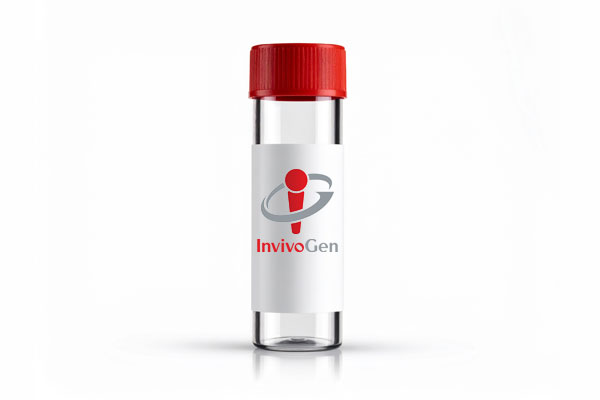
pLV-SpikeV13
-
Cat.code:
plv-spike-v13
- Documents
ABOUT
For lentiviral particle pseudotyping with the SARS-CoV-2 Spike (BA.4/BA.5 - South Africa, Jan-March 2022)
pLV-SpikeV13 has been specifically designed for the pseudotyping of lentiviral particles with the SARS-CoV-2 Spike (S) protein when co-transfected with plasmids encoding a reporter and accessory proteins (not provided). pLV-SpikeV13 encodes the full-length Spike sequence from the Omicron variants (BA.4 and BA.5 lineages), and for optimal expression, it is codon-optimized and the C‑terminal ER-retention signal has been removed [1, 2].
Gene Description
This plasmid encodes the Spike protein from the SARS-CoV-2 Omicron BA.4 and BA.5 variants, first reported in South Africa in early 2022. These variants share the same Spike protein. They are classified as members of Clade 22A/22B (Nextstrain classification) and BA.4/BA.5 lineages (Pango classification). They are characterized by the presence of several mutations within the Spike coding region, of which, several are of concern [3,4].
- S1 domain: T19I, deletion (Δ)L24-P26, A27S, ΔH69+V70, G142D, V213G, D614G, H655Y, N679K, P681H
- RBD: G339D, S371F, S373P, S375F, T376A, D405N, R408S, K417N, N440K, L452R, S477N, T478K, E484A, F486V, Q498R, N501Y, Y505H
- S2 domain: N764K, D796Y, Q954H, N969K
![]() Learn more about SARS-CoV-2 variants
Learn more about SARS-CoV-2 variants
General Plasmid Description
This plasmid features a potent mammalian expression cassette composed of the ubiquitous human-(h)CMV composite promoter, a rabbit β-globin intron directly upstream of the spike gene, and a rabbit β-globin polyadenylation (pAn) signal. The spike coding sequence includes the SARS-CoV-2 signal sequence and the S1/S2 furin cleavage site [5]. These plasmids are selectable with ampicillin in E. coli.
Applications
- Generation of Spike pseudotyped lentiviral particles upon co-transfection with reporter and accessory protein plasmids (not provided).
- Screening of SARS-CoV-2 inhibitors including small molecules, monoclonal antibodies, or convalescent plasma.
References:
1. Johnson, M.C. et al. 2020. Optimized Pseudotyping Conditions for the SARS-COV-2 Spike Glycoprotein. J Virol 94.
2. Ou, X. et al. 2020. Characterization of spike glycoprotein of SARS-CoV-2 on virus entry and its immune cross-reactivity with SARS-CoV. Nat Commun 11, 1620.
3. https://www.who.int/en/activities/tracking-SARS-CoV-2-variants/
4. https://outbreak.info/situation-reports
5. Coutard, B. et al. 2020. The spike glycoprotein of the new coronavirus 2019-nCoV contains a furin-like cleavage site absent in CoV of the same clade. Antiviral Res 176, 104742.
All products are for research use only, and not for human or veterinary use.
SPECIFICATIONS
Specifications
EPI_ISL_11542604
Generation of Spike pseudotyped lentiviral particles, Screening of SARS-CoV-2 inhibitors
Plasmid construct is confirmed by restriction analysis and full‑length open reading frame (ORF) sequencing.
CONTENTS
Contents
-
Product:pLV-SpikeV13
-
Cat code:plv-spike-v13
-
Quantity:20 µg
Shipping & Storage
- Shipping method: Room temperature
- -20°C
- Avoid repeated freeze-thaw cycles
Storage:
Caution:
Details
Spike-pseudotyping of lentiviral particles
InvivoGen's pLV-Spike plasmid collection has been designed for pseudotyping lentiviral particles with the SARS-CoV-2 Spike (S) protein. The S protein a structural glycoprotein expressed on the surface of SARS‑CoV-2. It mediates membrane fusion and viral entry into target cells upon binding to the host receptor ACE2 and its cleavage by cellular proteases such as TMPRSS2 [1]. Notably, the C‑terminal cytoplasmic tail of the S protein encodes a presumptive endoplasmic reticulum (ER)‑retention motif (KxHxx), which has previously been shown to enable the accumulation of SARS‑CoV S proteins at the ER‑Golgi intermediate compartment (ERGIC) and facilitate their incorporation into new virions [2]. The removal of this motif (d19) has been shown to increase the expression of the spike protein in pseudovirions [3,4].
Pseudotyped particle production involves the co-transfection of 293T cells with a reporter protein vector (e.g. GFP), one or several plasmids encoding the necessary lentiviral proteins, and the pseudotyping pLV-Spike plasmids. The transfected cells produce SARS‑CoV‑2 Spike (S)‑pseudotyped lentiviral particles, which can then be used to infect permissive cells, such as ACE2‑expressing HEK293-derived cells and ACE2‑TMPRSS2‑expressing A549-derived cells.
References
1. Hoffmann M. et al. 2020. SARS-CoV-2 cell entry depends on ACE2 and TMPRSS2 and is blocked by a clinically proven protease inhibitor. Cell. 181:1-16.
2. Ujike, M. et al. 2016. The contribution of the cytoplasmic retrieval signal of severe acute respiratory syndrome coronavirus to intracellular accumulation of S proteins and incorporation of S protein into virus-like particles. J Gen Virol 97, 1853-1864.
3. Johnson, M.C. et al. 2020. Optimized pseudotyping conditions for the SARS-COV2 Spike glycoprotein. J Virol. 94(21):e01062-20
4. Ou, X. et al. 2020. Characterization of spike glycoprotein of SARS-CoV-2 on virus entry and its immune cross-reactivity with SARS-CoV. Nat Commun 11, 1620.
DOCUMENTS
Documents
Technical Data Sheet
Plasmid Map and Sequence
Plasmid Sequence
Safety Data Sheet
Certificate of analysis
Need a CoA ?
